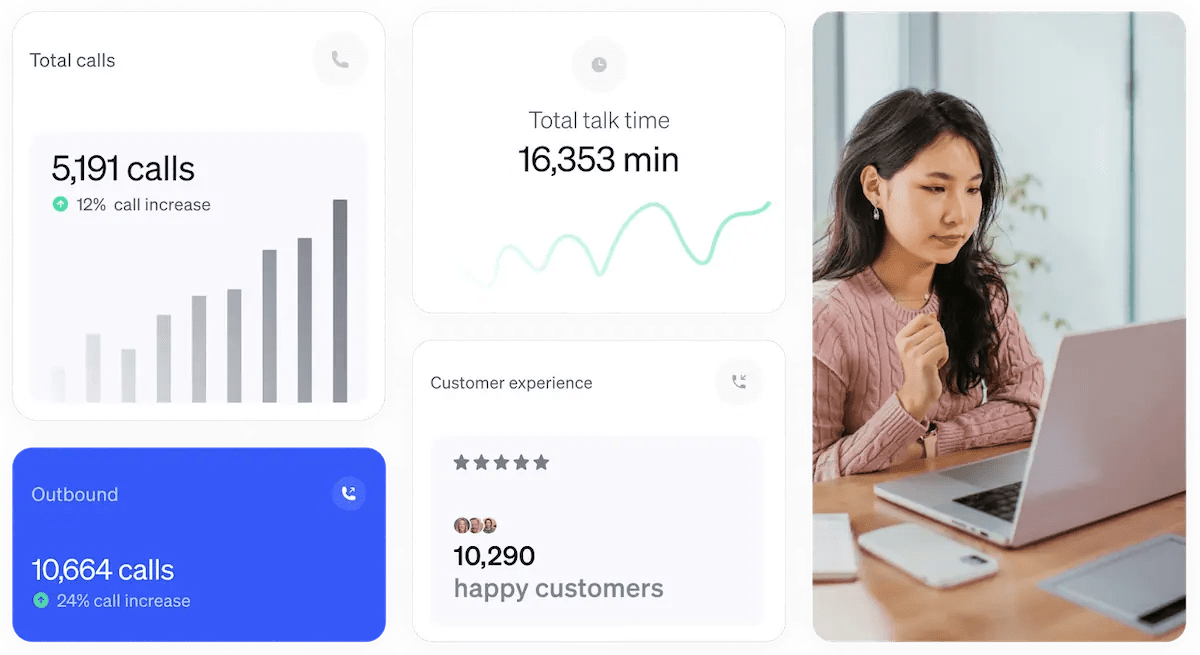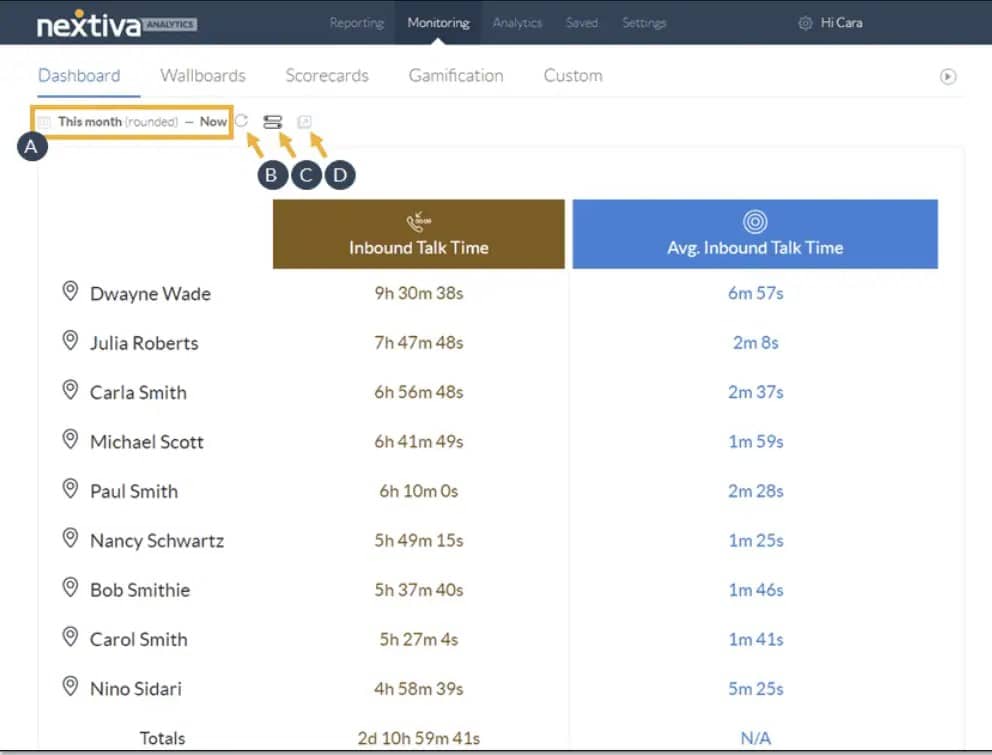Imagine you have a bow and arrow and must hit a target a few feet away. Would you rather take your shot blindfolded or with your eyes wide open?
Well, it’s a similar situation with running a business. If you don’t truly understand your customers and what they want, then achieving your goals can be just as hit-or-miss. Using customer intelligence (CI) effectively removes that blindfold and sharpens your focus so you can make every shot count.
Here, we’ll cover the basics of gathering customer intel, how it benefits your business, and how to implement it successfully.
Intro to Customer Intelligence
CI is the process of gathering and analyzing detailed customer information to better understand and serve customers. It uses data points throughout the customer journey, such as purchase history, customer sentiment, preferences, feedback, and demographic details. Then it analyzes them to identify patterns and insights to help tailor your services, anticipate future customer needs, and enhance overall customer satisfaction.
For example, suppose your behavioral data tells you that customers tend to purchase a specific product combination. In that case, you can create targeted promotions or bundled offers to increase sales and improve customer experience.
Here’s how The Inkey List, a popular UK skincare brand, uses CI to cross-sell:

How to Tell if You Need CI
Here are some signs that might indicate it’s time to implement CI:
- Lack of personalization: If your customer interactions feel generic, or you’re unable to offer personalized customer experiences, you might benefit from deeper insights into customer behaviors and preferences.
- Ineffective marketing campaigns: If your marketing efforts aren’t bringing in the results you’d like — for example, if your promotions aren’t converting — CI can help you understand what your customers really want.
- Inconsistent customer experience: If customers receive varying service or product quality levels, CI can help standardize and elevate the overall experience by identifying gaps and aligning services across all touchpoints.
- High customer churn: If you’re losing customers at an increasing rate, it might mean your strategies aren’t meeting their needs. CI can help you determine why customers are leaving and how to keep them.
- Lack of data-driven decisions: If you’re mainly making decisions based on gut feelings rather than data, CI can provide the analytics you need to make more informed, effective decisions.
- Readiness to scale: If your business is gearing up to grow, CI can give you the customer insights you need to expand and effectively meet market needs.

CX Benefits of Customer Intelligence
Knowing exactly how your customers feel and what they expect allows you to build more personalized brand touchpoints. This can lead to increased customer satisfaction, retention, sales, and customer lifetime value (CLV).
Here are the three main benefits of integrating CI into your customer experience strategy:
Improved customer retention
CI allows you to identify areas of opportunity in your business, proactively address pain points, and offer a better customer experience. This helps you to increase retention, reduce churn, and increase CLV.

That’s because when you understand and meet your customers’ needs, they’re more likely to stick around and continue doing business with you. Over time, this customer loyalty translates into increased revenue and a stronger, more sustainable business relationship.
Related: Voice of Customer Program: What Is VoC & What to Do With It
Boost in brand reputation
CI data lets you identify your customers’ needs and solve their problems in a personalized way, leading to a more positive experience. And when customers have a good relationship with your brand, they’re more likely to leave positive reviews or recommend you to others, which is why happy clients are the best publicity.

Let’s say you’ve run a survey and discovered that your customer base values efficient customer support, but they dislike chatbots as the only communication channel. Once you’ve identified your unique customers’ preferences, you can make improvements, like changing your contact center provider to support more communication channels.
In return, you’ll get more satisfied customers who are happy to sing your praises. This improves your brand reputation and can even bring in new customers, as 88% of people trust recommendations from people they know.
Informed strategic decision making
Customer intelligence data helps businesses understand what their customers like and need, which makes it easier to make smart decisions that improve results and save resources.
Picture this: Your CMO is convinced you need an X (formerly Twitter) account, so you outsource social media management to an agency that quoted you an additional $2,000 a month for X management. Without CI, you’ll spend $24,000 a year for X content — on top of the hours your team spends reviewing and approving the work.
But what if CI reveals that your customers are mostly on LinkedIn, Instagram, and YouTube? Based on this insight, you could refocus your resources to invest where you’re likely to see the highest engagement and ROI.
How to Implement CI at Your Company
Just getting started? Here’s how to implement CI at your company:
- Identify data sources
- Consolidate and integrate data
- Analyze customer data
- Derive actionable insights
- Take action
- Measure and iterate
Let’s look at these six steps in more detail:
1. Identify data sources
Identifying your data sources tells you where to look to really understand your customers. This way, you can see how they interact with your business, what they like or don’t like, and what they’re buying. You can gather CI data wherever you interact with customers along their journey, from initial contact through to post-sale support.
Some examples include:
- Customer relationship management (CRM) systems: Capture interactions like sales calls, customer inquiries, and meeting notes.
- Social media platforms: Look at comments, replies, and shares.
- Website analytics tools: Track metrics like which pages potential buyers and current customers visit most, how they navigate your site, and which offerings they spend time looking at.
- Customer surveys and feedback forms: Collect direct feedback regarding customer satisfaction with recent purchases or service interactions, including suggestions for improvement and reasons for satisfaction or dissatisfaction.
- Sales data: Analyze purchase history, revenue data, and product performance, like best-selling items or underperforming products.
- Support tickets: Examine recurring problems, customer frustrations, and the efficiency of your problem resolution.
2. Consolidate and integrate data
After identifying your data sources, use tools that bring all this information together into one easy-to-use dashboard. This makes it simpler for everyone to see the whole picture and use this data daily, whether they’re predicting trends, assessing risks, or understanding customer preferences. If the data is scattered around different folders, charts, and files, then employees will probably find it frustrating and will most likely make more gut-driven decisions.
Make sure the CI platform you choose also lets you view all customer communications in one place. A unified customer service tool saves your people time and makes responding to customers faster and more accurate.

3. Analyze customer data
Once you have your customer analytics in one place, use analytical tools and techniques to transform raw data into clear patterns, trends, and digestible statistics. Focus on uncovering insights like customer preferences, pain points, needs, and areas of improvement.

You could do this through statistical analysis, segmentation, or a machine learning model.For example, you can correlate demographic data from your CRM with your support service feedback score from your call center analytics. This might show you who values certain channels over others. For instance, you might discover that certain customer segments, like women over 30, prefer email as a primary support channel rather than phone calls or live chats.
You can then use customer experience technology to build in-app product interventions based on the analyzed data.
Pro tip: Use voice analytics software like Nextiva Analytics to track real-time call statistics and review your individual customer information on one data platform — and in a single-page view. |
4. Derive actionable insights
Once you’re done with the analysis, it’s time to translate these findings into implementable strategies that directly influence your business. Otherwise, you’re just filling up more spreadsheets.
Start by evaluating which data points have the highest potential for positive impact on customer satisfaction and business outcomes. Then, consider factors like feasibility, cost, and the time required to implement these changes. This helps focus your efforts on making changes that will deliver the most value.
Let’s say surveys and feedback forms reveal that customers are dissatisfied with your customer service response times. Since great customer service is the reason 88% of customers stay with a brand, addressing this issue is closely tied to your business’s profitability. In this case, a high-impact solution would be to improve response strategies or implement customer service automation, like chatbots, artificial intelligence (AI), and self-service portals.

5. Take action
Based on what you’ve learned from your CI data, begin implementing changes that will make a real difference. To ensure these changes are effective, and to gauge their impact, set key performance indicators (KPIs) aligned with your goals.
Let’s say you’re personalizing your marketing campaigns. Your KPIs could include increasing personalized email open rates or improving conversion rates from targeted advertisements. Alternatively, if you’re looking to streamline the customer service experience, your KPIs might focus on reducing average response times or improving customer satisfaction scores.
| Managing a call center? Here are 12 call center metrics and KPIs to help you boost customer satisfaction and drive results. |

6. Measure and iterate
Keep a close eye on how the changes you make affect your customers’ experiences. Here are some ways to track what’s working and what needs refinement:
- Test hypotheses: Start by testing your ideas. For example, if you think offering free shipping could increase sales, set up a test during a specific period and compare the sales data to previous periods without free shipping.
- Collect feedback: Regularly gather customer feedback through surveys or direct communication to get a sense of their reaction to recent changes.
- Use analytics tools: CI software like Google Analytics lets you monitor user behavior changes, such as time on site or conversion rates. For customer service improvements, track metrics like average response time and customer satisfaction scores.
Finally, continue this cycle. Make changes, measure results, and adjust. The goal is to constantly find ways to improve based on real feedback and data.
Pro tip: You can also use Nextiva Analytics to track customer success KPIs like talk time and the number of inbound calls answered. This way, you can hold your staff accountable for their performance and measure the success of your efforts. |
Nextiva Helps You Understand Your Customers Better
Implementing CI in your business helps you to increase customer engagement and retention rates, along with enhancing your brand’s reputation and enabling you to make more data-driven decisions. But CX and customer success teams need the right tools to effectively analyze and act on this information.
Nextiva offers a full suite of unified communications and CX tools that simplify these tasks, making it easier for your teams to connect with customers and improve their experience every step of the way.
- NextivaONE has all your internal and external customer communications in one place, giving you a comprehensive view of customer interactions.
- Voice Analytics breaks down data silos and helps you analyze trends between time periods, employees, locations, and marketing campaigns.
- An AI-powered contact center lets you reach customers anywhere and deliver more tailored experiences.
- Customer journey orchestration helps you map out the customer’s path and gain the context you need to serve them and sell better.
But don’t just take our word for it. See how Nextiva helps you transform your customer experience today!
Related: Customer Intelligence Software: Key Features & Use Cases
Create an amazing CX.
Say goodbye to siloed conversations and hello to a unified experience with Nextiva for the best customer experience.

















 Customer Experience
Customer Experience 









